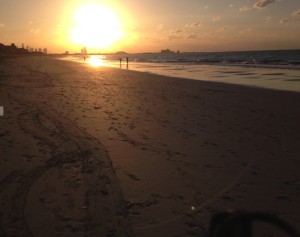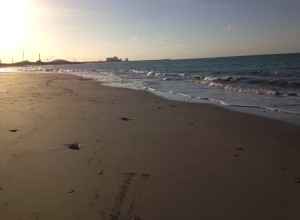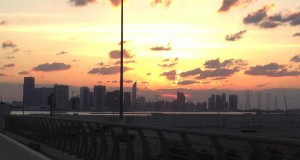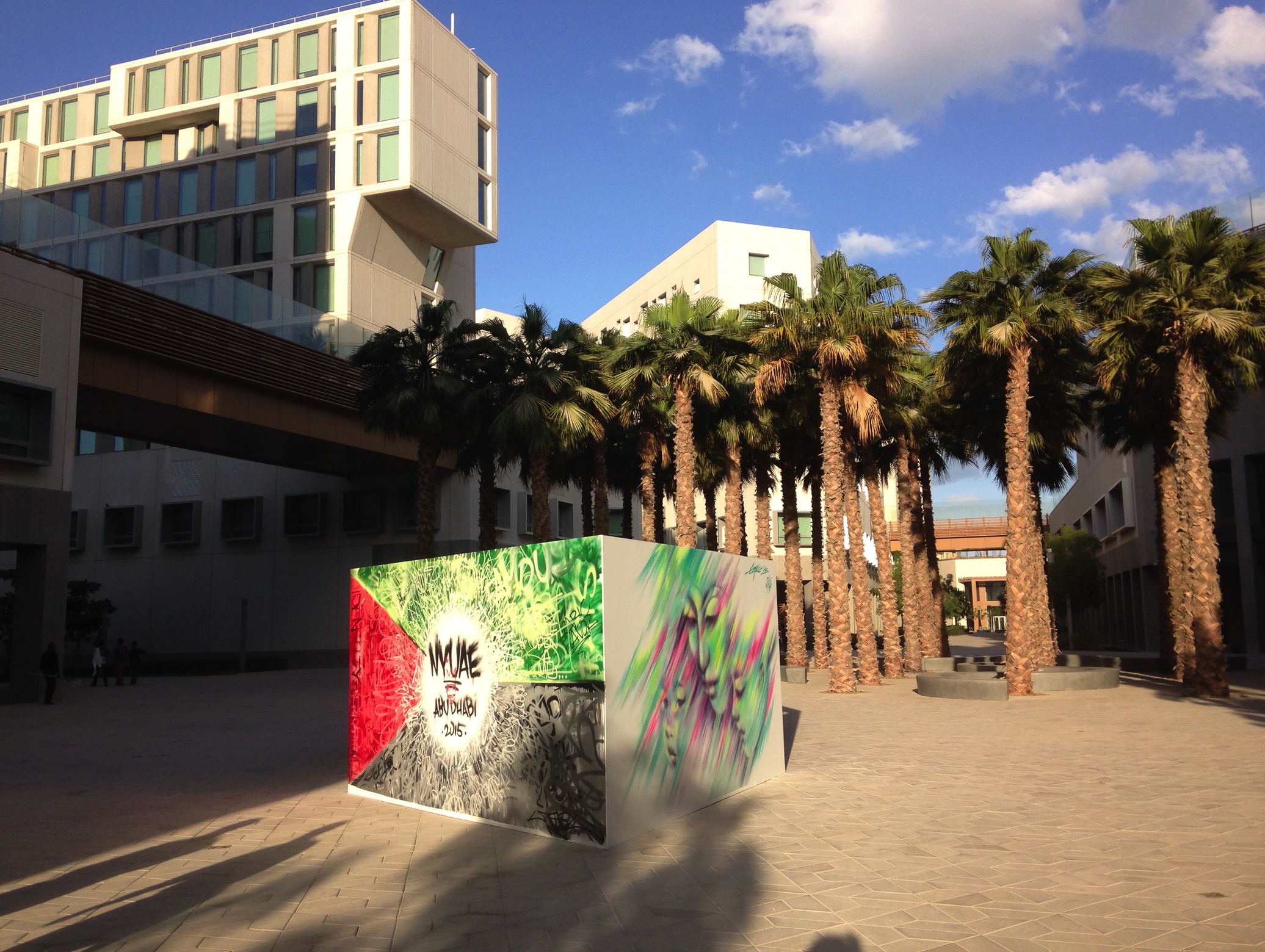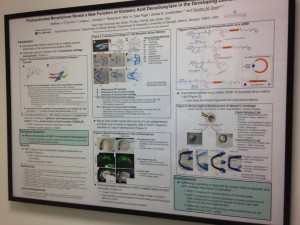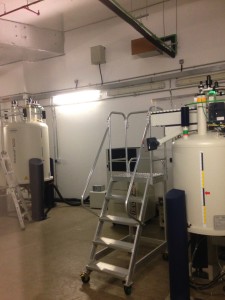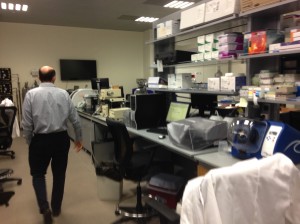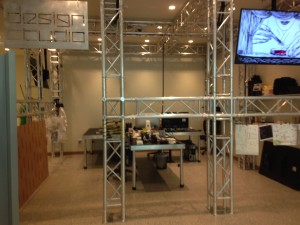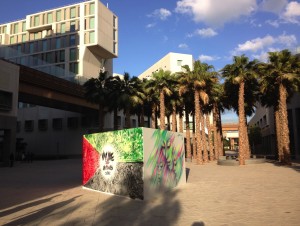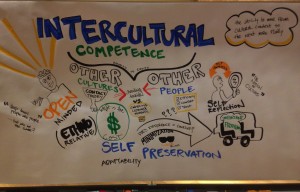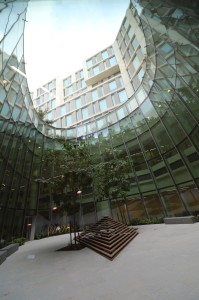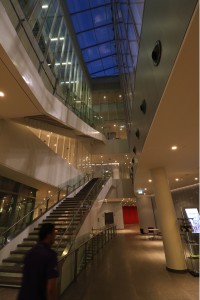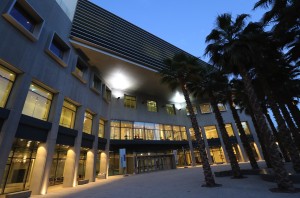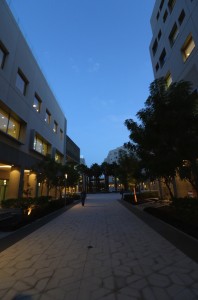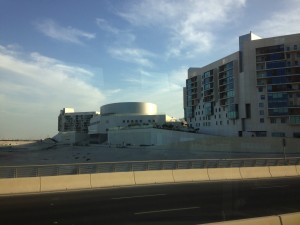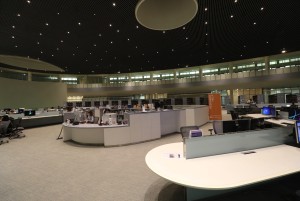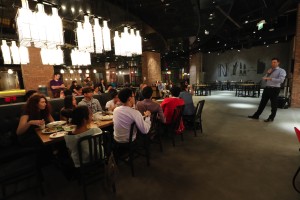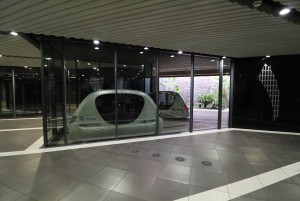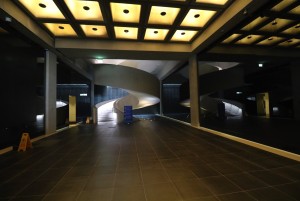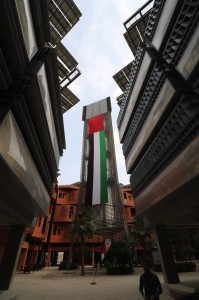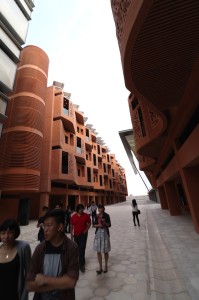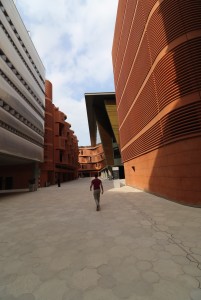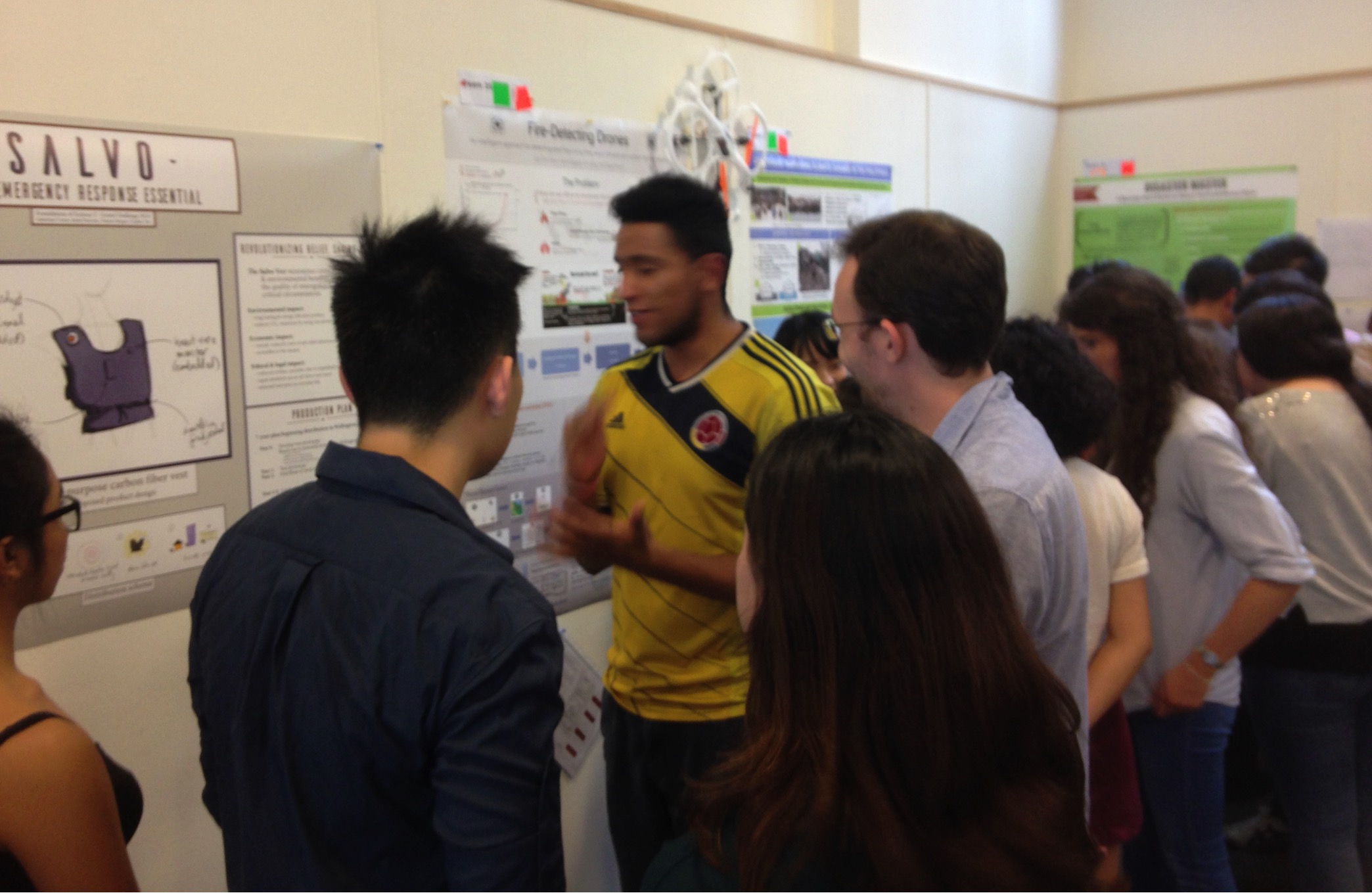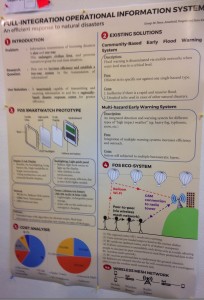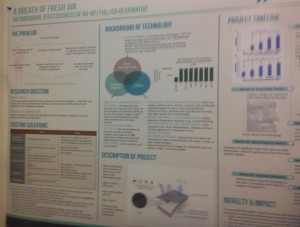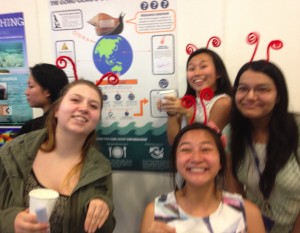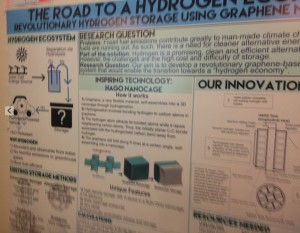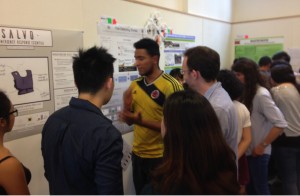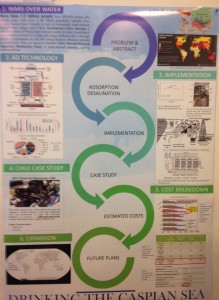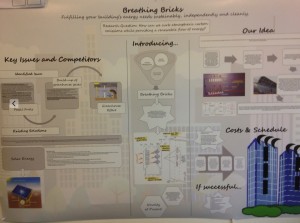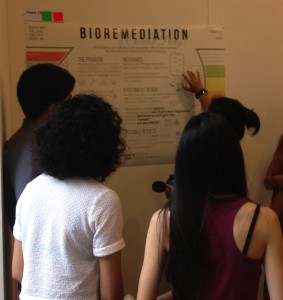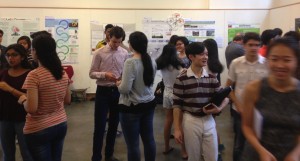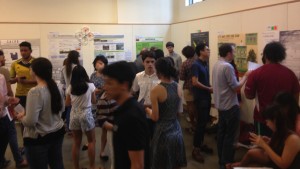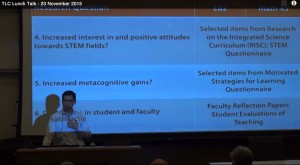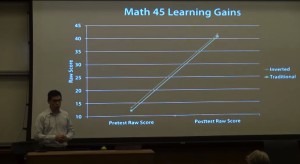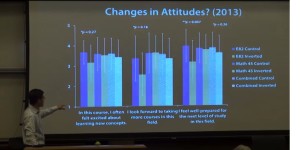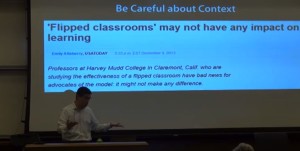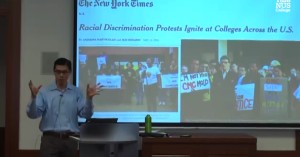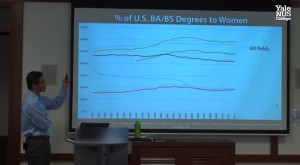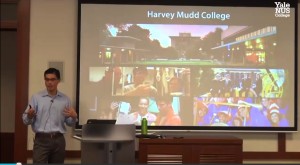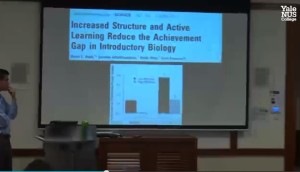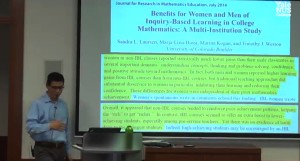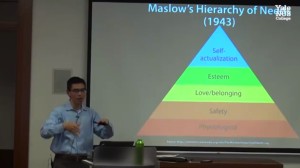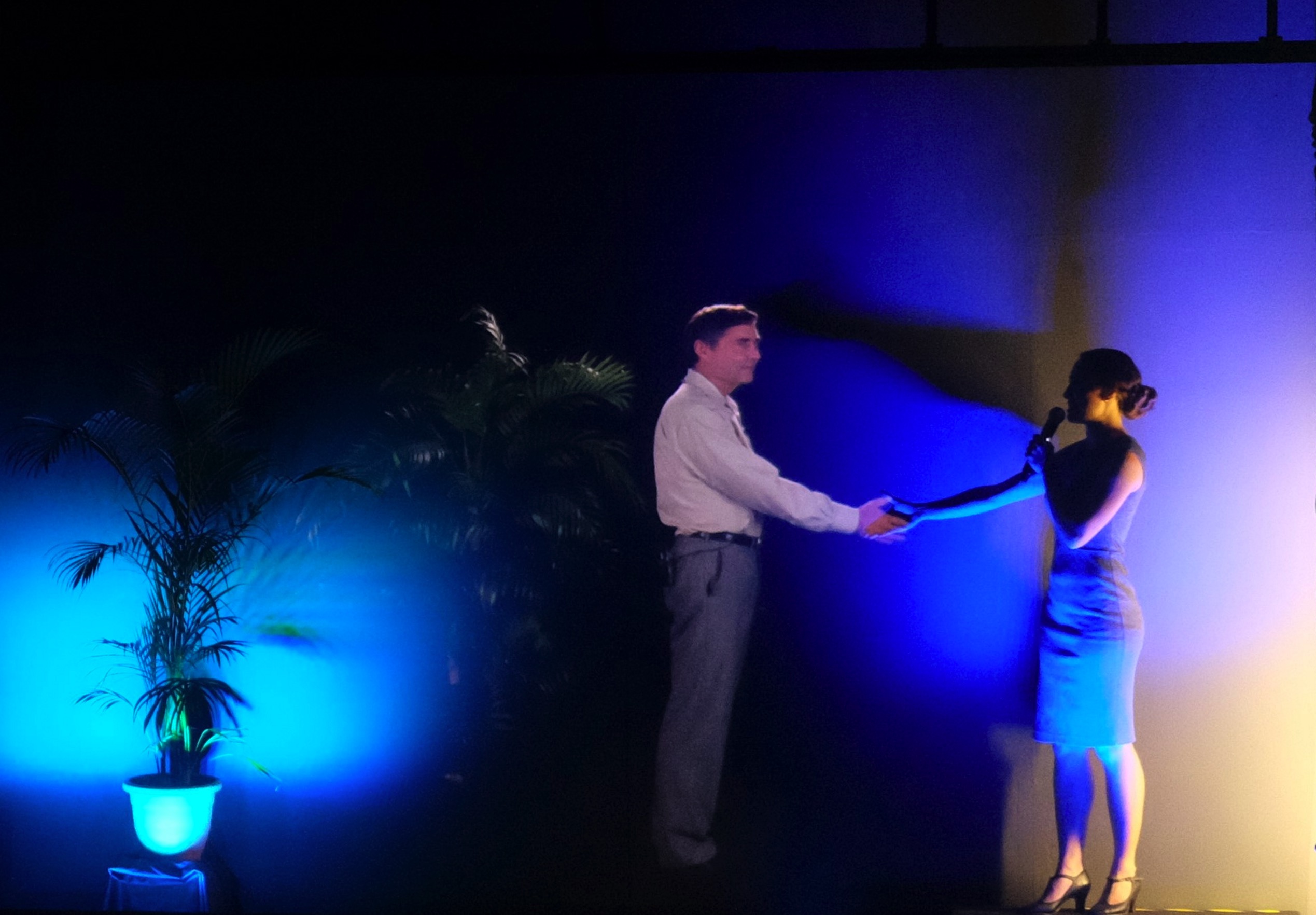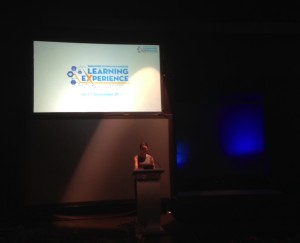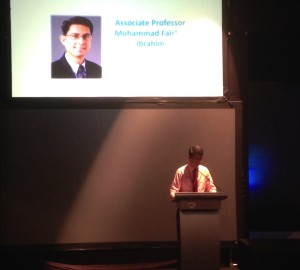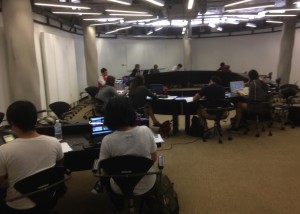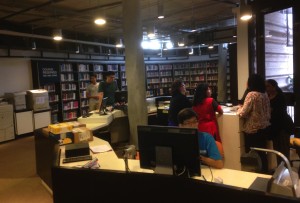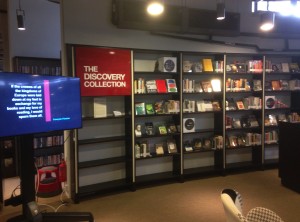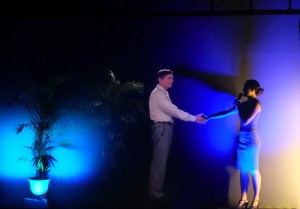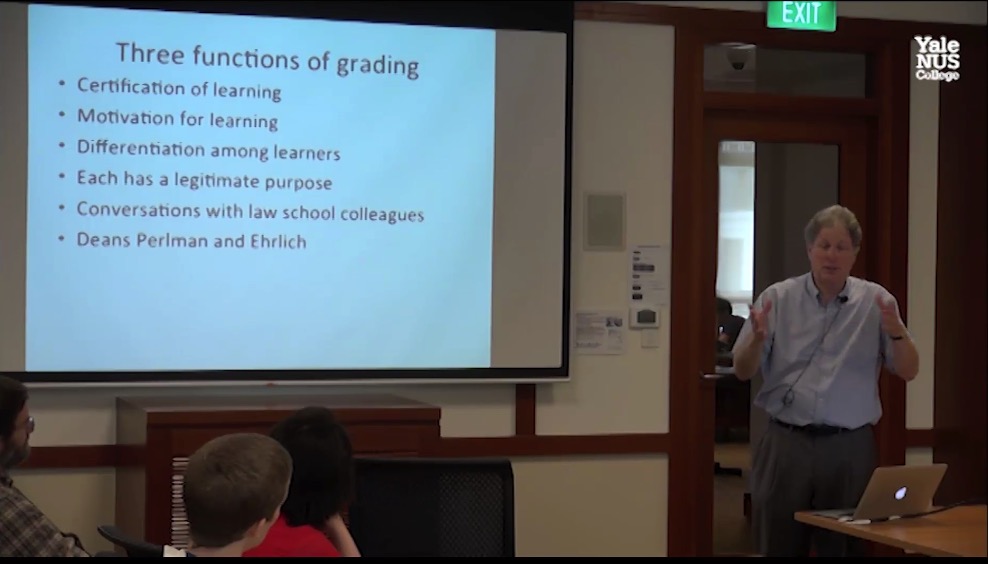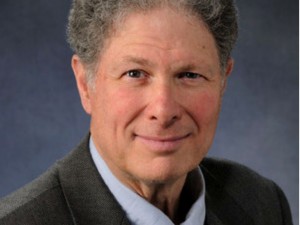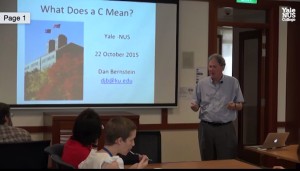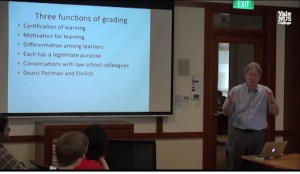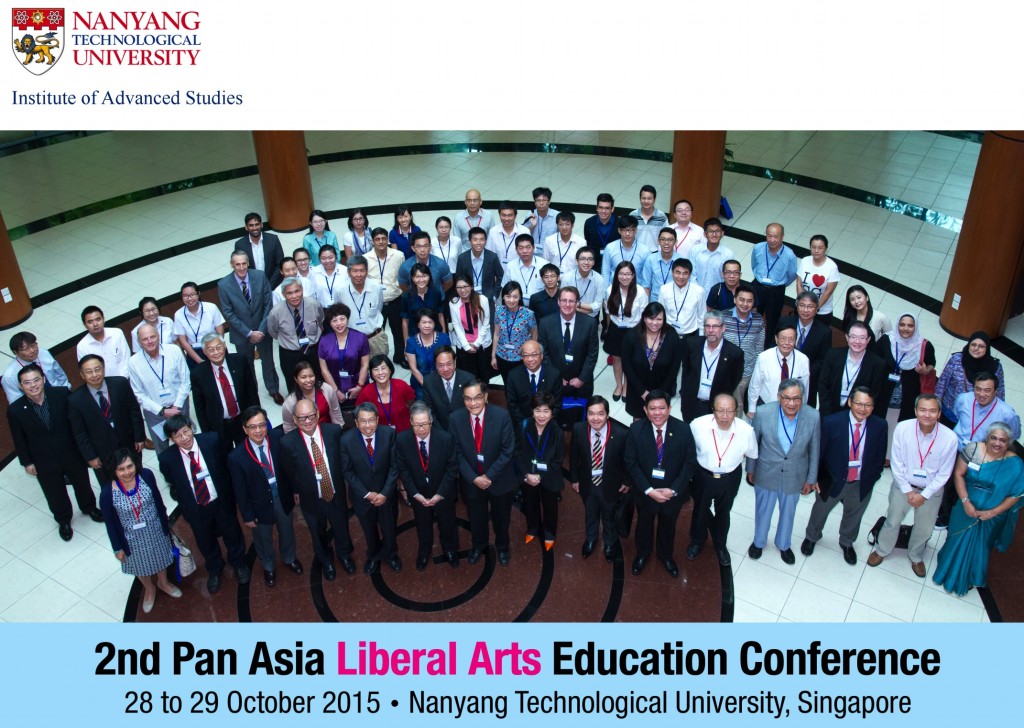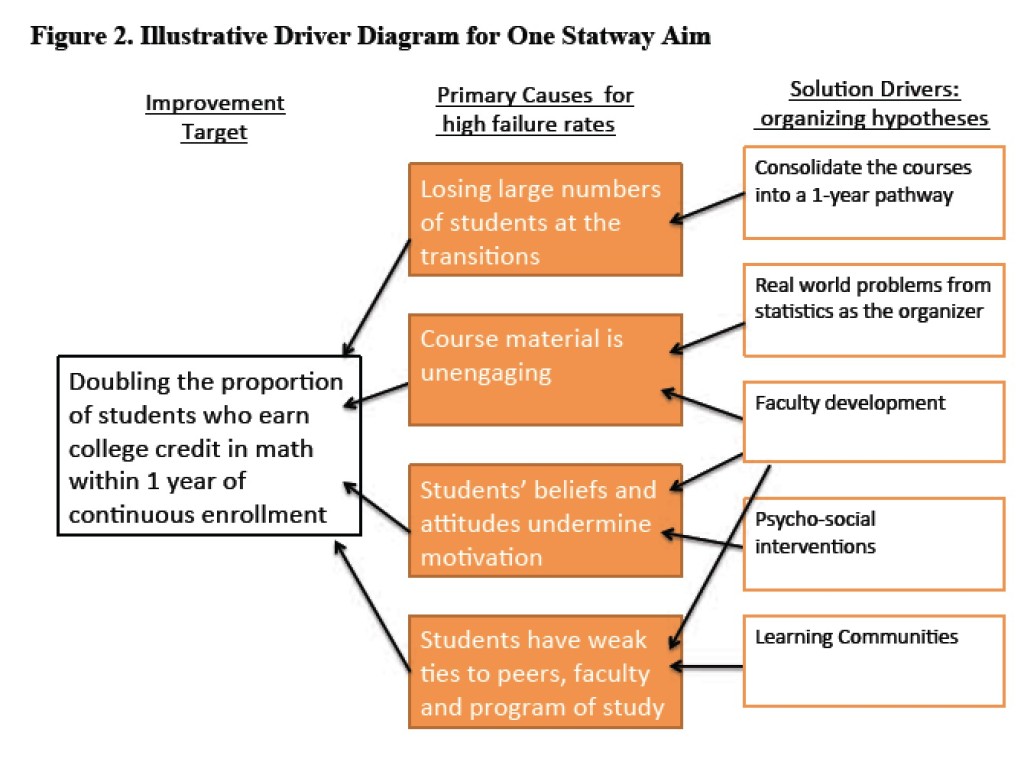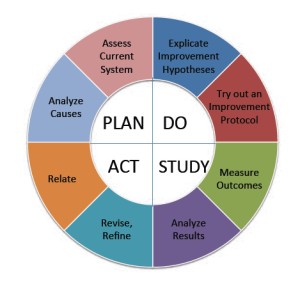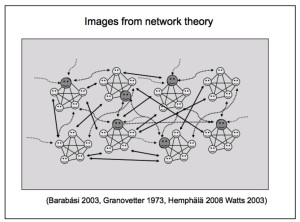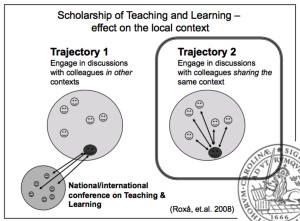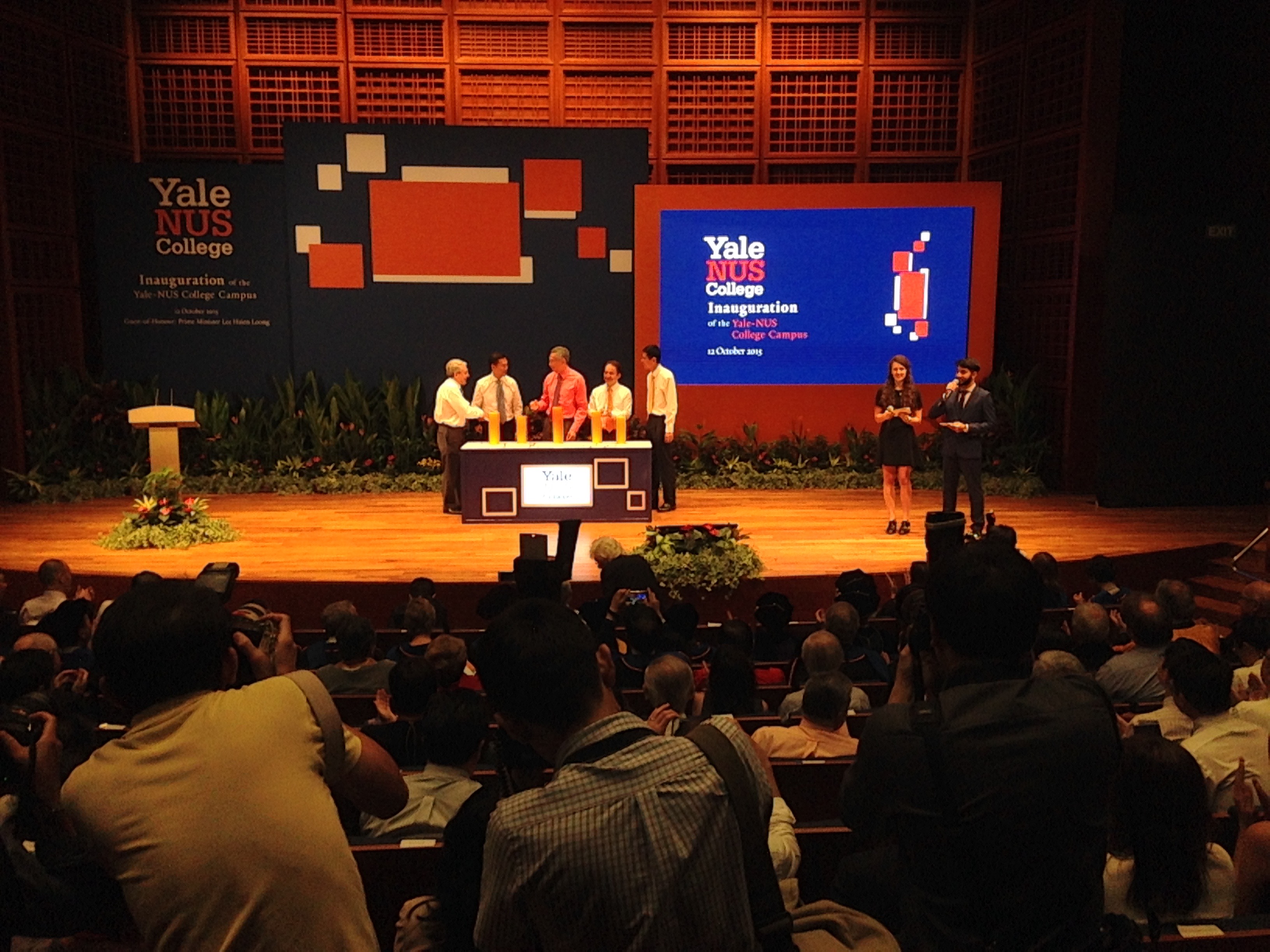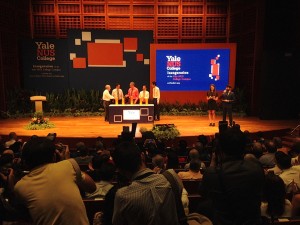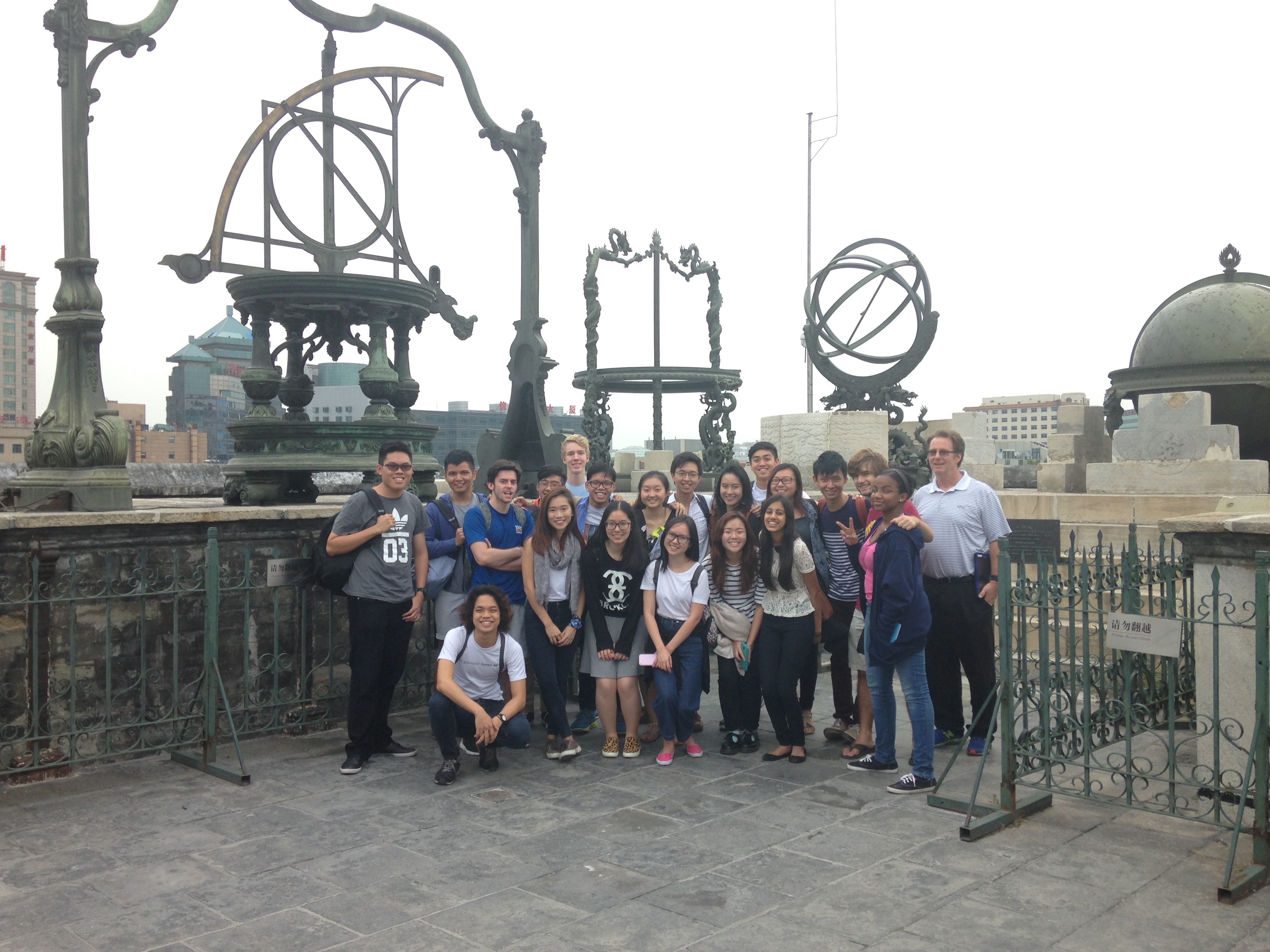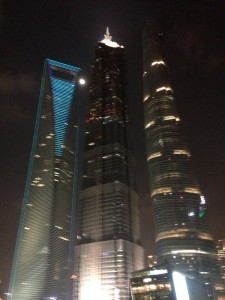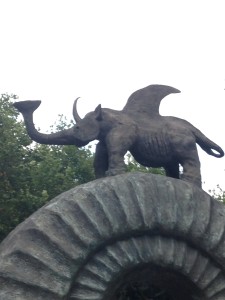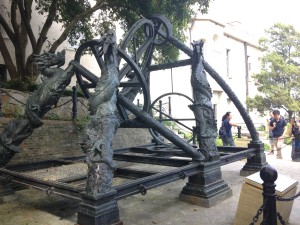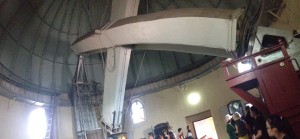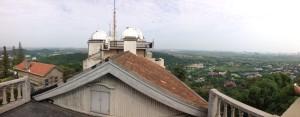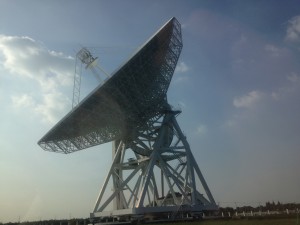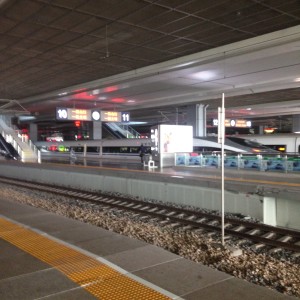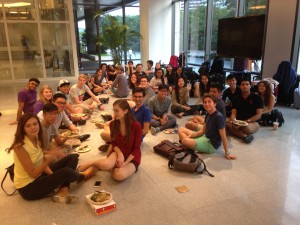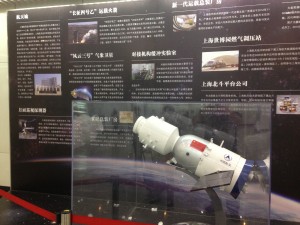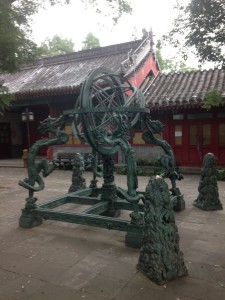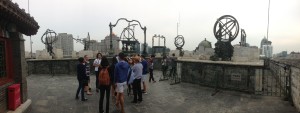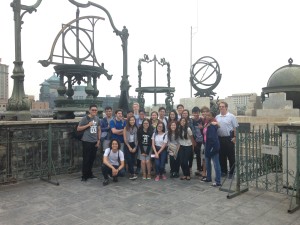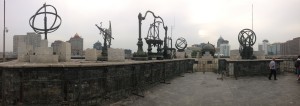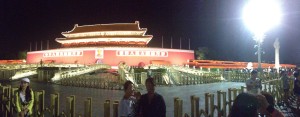During December 7-10, 2015, I represented Yale-NUS as a member of a delegation visiting NYU Abu Dhabi. The group included our Dean of Students, Brian McAdoo, our Dean of CIPE, Trisha Craig, several of our Dean’s Fellows and a group of about 18 students. My role was to represent my Centre for Teaching and Learning and also to inquire more broadly about NYU Abu Dhabi’s development of curriculum and faculty research and teaching. Of course the chance to visit our friend Kyle Farley, NYUAD’s new Dean of Students, and to see the gleaming new campus at Saadiyat Island was also a great reason to join!
The tour was organized by Chris O’Connell, who worked with Victor Lindsay at NYUAD to put together a fantastic overview of their campus, student life, and curriculum. Victor met us at the airport and rode with us from Dubai to Abu Dhabi. We had a great chance to talk in the car, and I was able to tell him about my visit to NYUAD in their old campus back in 2013. During that time, NYUAD had just started up, and was at about the same point in life as Yale-NUS College is now.
We began our tour with a visit to the campus, where we settled into some great accommodations. The campus is really amazing, with shiny new buildings everywhere, and an impressive scale. On the first day we visited the Masdar Institute, and discussed some aspects of the NYUAD approach to diversity and intercultural understanding with Alta Mauro, who gave a great presentation to the students.
Views of the NYU Abu Dhabi Campus – science laboratories
Scenes from the NYU campus – our tour and discussion of intercultural competence, views of the administration building and library, view outside of the campus, and Kyle Farley addressing our students after arriving.
One key person I met with was Bryan Waterman, a professor of English and leader in the NYUAD curriculum restructuring. The NYUAD program includes 8 courses in their common curriculum, which was implemented several years ago. The faculty discussed during academic year 2014-15 possible alternatives, and then gathered a list of alternatives in Spring 2015. During Fall of 2016 they selected and voted for an alternative structure of the common curriculum, which is now only 6 courses, organized along common themes.
Bryan is eager to develop “plenary moments” in the NYUAD common curriculum to enable these courses to interconnect at key moments. He cited the Stanford “Thinking Matters” courses which sophomores take, and pointed out that many of the NYUAD courses are similarly aligned on deep themes like “Justice” and can take on the topic from a variety of angles. The plenary moments, and other speakers, shared joint lectures, and events can bring the various courses together. He is aiming for more consistency among the different courses, and more cohesion in terms of skills.
He feels students can be excellent at recognising the whole of a course, and he engaged focus groups of students as well as provided He also convened a session called “Hack the Curriculum” for students to meet in groups to solve some actual curricular challenges. They met for 4 hours, discussed solutions in groups and presented these to each other. Some of their ideas stuck and made it into the actually adopted curriculum. He was really excited by the energy and thoughtfulness of these students – 45 of them who took the time in the middle of the semester to do this work!
In addition to meeting with Bryan Waterman, we were able to visit Timothy Dore, a remarkable chemist at NYUAD. Tim took us on a tour of his labs, which were a sprawling complex of rooms filled with advanced instrumentation. It was clear that NYUAD was making a substantial investment in his scholarship, and having such resources placed Tim and scientists like him at a competitive advantage compared with others at smaller institutions.
Our academic discussions also included a conversation with Charles Grim, Vice Provost for Academic Administration. Charles gave us a great overview of the process of hiring and developing the NYUAD faculty, and his work there began in 2010, right at the beginning of NYUAD. The dynamics of managing faculty in a “startup,” the shifting expectations of new faculty as they arrive and build an institution, and the change in the scale and research component at NYUAD all caused some interesting dynamics as the different faculty cohorts worked together to build NYUAD into its current state.
We also had a great discussion with Ken Nielsen, who is the Director of the NYUAD writing center. We discussed how Ken has set up training programs for the Global Academic Fellows (like our Dean’s Fellows), and for peer tutors within the center. Ken had a number of great ideas about supporting students.
The pictures below show many of the scenes of the campus, our expedition to the desert for an amazing dinner at the dunes (including dune boarding, camels and hawks!), a visit to Saadiyat Beach, a visit to the Sheikh Zayed Grand Mosque, and some great times exploring Abu Dhabi with a very friendly and welcoming group of faculty, staff and students. I was grateful for the experience and look forward to working more with NYUAD in the future, as Yale-NUS and NYUAD have a lot that they can share with each other and many common experiences building new models of higher education in a startup environment.
Visit to the Desert for Dinner and Dune-boarding:
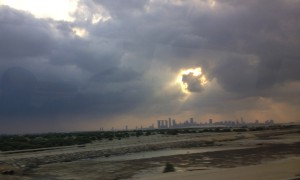
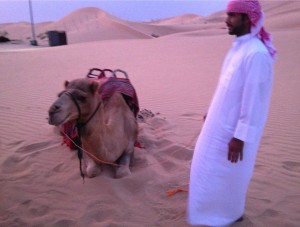

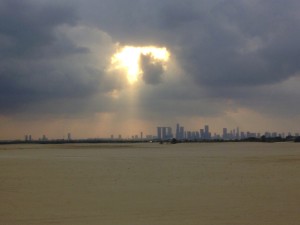
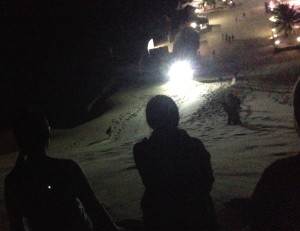
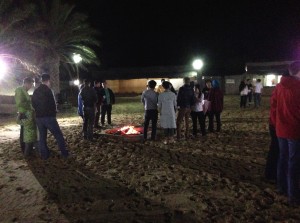
Visit to the Grand Mosque!

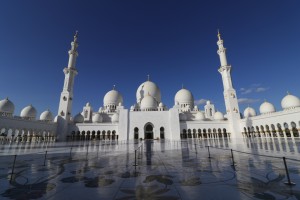
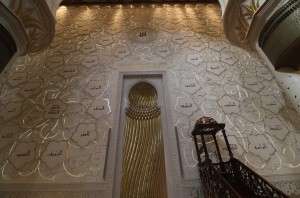
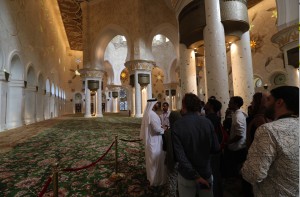

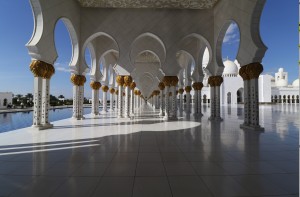
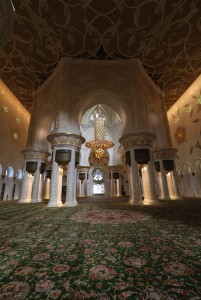
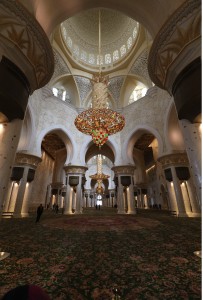
The Masdar Institute – between Dubai and Abu Dhabi, where a lot of advanced energy research is being conducted
Views of Dubai, Abu Dhabi, and Saadiyat Island beaches!
